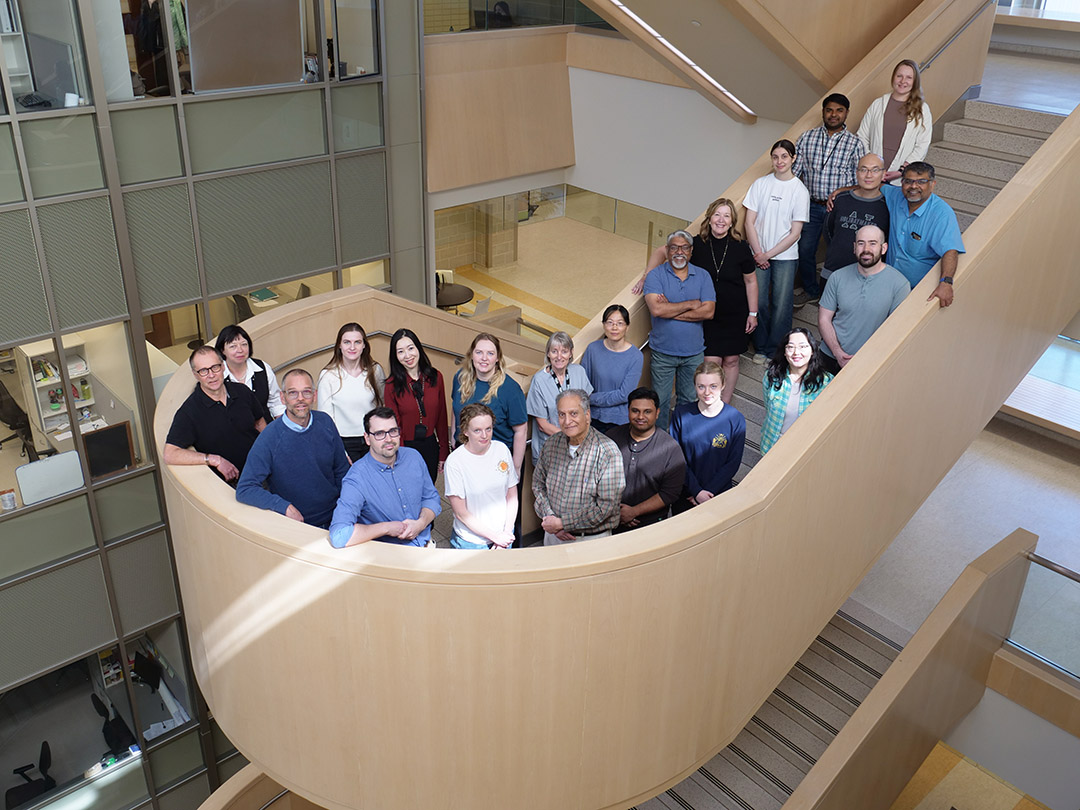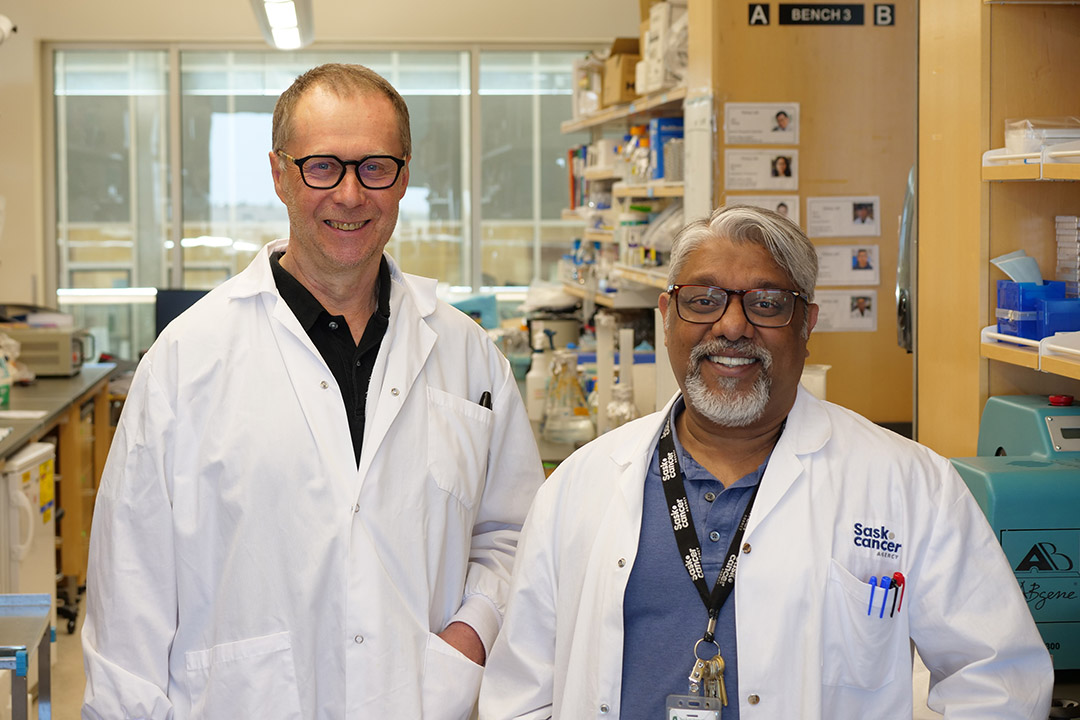
USask scientists identify vulnerability in cancer cells
A team of University of Saskatchewan (USask) researchers, using innovative genetic screening, have identified a new target to suppress breast cancer growth.
By Matt Olson, Research Profile and ImpactDr. Franco Vizeacoumar (PhD) and Dr. Andrew Freywald (PhD) with USask and the Saskatchewan Cancer Agency, are leaders of a USask research team that has identified a potential target for eliminating breast cancer cells.
“One of the biggest challenges in treating cancer is that not all cancer cells are the same,” Vizeacoumar said. “But instead of focusing on their differences, we asked if there are common factors that all cancer cells rely on. The answer is yes, and our work shows that by focusing on these unifying factors, we can also find weaknesses they bring to all cancer cells.”
The team focused on an enzyme called polo-like kinase 1 (PLK1), which is found in large amounts in nearly all cancer cells and helps tumours grow.
“This is a protein, an enzyme that is essential for controlling the regulation of cell division or cell expansion ... it assures tumour growth,” Freywald said. “This is a protein that is abundant specifically in cancer cells.”
However, because PLK1 also exists in small amounts in healthy human cells, it is difficult to attack PLK1 in only cancerous cells without damaging normal tissues.
Using the CRISPR gene editing tool at the single-cell level, the research team identified what Vizeacoumar called “genetic dependencies” of PLK1-overproducing cells. Instead of targeting the PLK1 enzyme directly, the researchers focused on the genes co-operating with PLK1 in driving cancer.
Published in Cell Genomics, this work marks one of the first successful applications of single-cell CRISPR screening combined with animal model-based CRISPR testing in Canada.
“We analyzed cancer cells that produce this enzyme in abundance and searched for those genetic perturbations that affect all the cancer cells at the single-cell level, while not damaging normal cells,” Vizeacoumar said. “This led us to land on a potential target to inhibit.”
The USask team then collaborated with a group of researchers in Germany and tested a new drug-like molecule that inhibits the target gene. Early results are promising, showing reduced tumour growth in animal models of human cancers.

Both Vizeacoumar and Freywald said there is no “magic bullet” for cancer treatment at this time, and substantial work remains to transform this molecule from lab testing into a drug ready for medicinal trials. However, identifying a unifying target for drug therapies gives health care researchers and practitioners another valuable weapon in the arsenal for battling cancer.
Vizeacoumar credited the success to a strong international collaboration and the strength of the research team they’ve been able to establish at USask. The research leading to the published findings in Cell Genomics has come from over a decade of hard work and many diligent researchers.
“This is the result of the global teamwork and the hard work of the talented team we’ve brought together right here in Saskatchewan,” he said.
Both Vizeacoumar and Freywald also credited the support they received from numerous agencies locally and nationally including the Canadian Institutes of Health Research, the Saskatchewan Cancer Agency, the Cancer Foundation of Saskatchewan, the Saskatchewan Health Research Foundation, and the Be Like Bruce organization.
Having published their findings in a high-impact, peer-reviewed journal, the team is now looking for additional funding to expand their research and actively bring it to the clinic.
“One of our directions will be searching for a combination ... with existing drugs that would work way more effectively than each individual drug,” Freywald said.
Together, we will undertake the research the world needs. We invite you to join by supporting critical research at USask.

